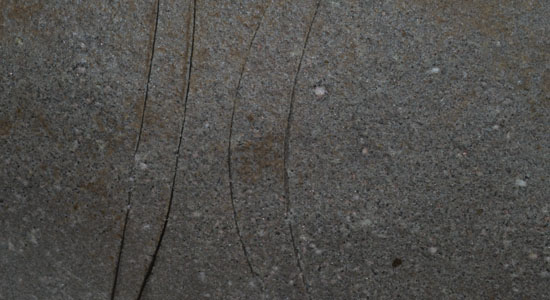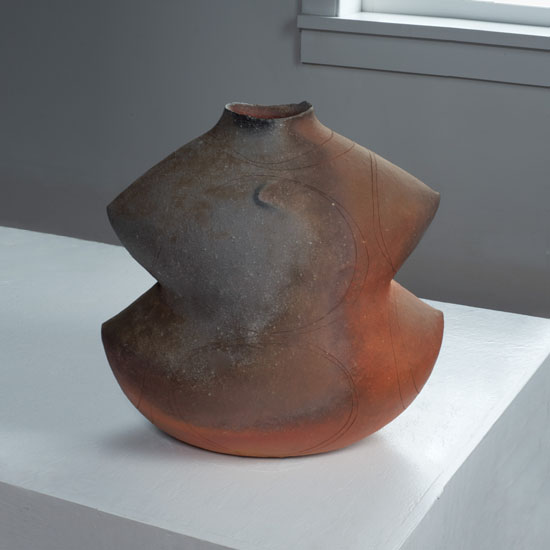At SOFA NY 2012, browngrotta arts will exhibit several pieces by ceramicist Yasuhisa Kohyama including Suemono. Suemono means ancient ceramic. Kohyama has nicknamed this piece “Dogu.” A dogu is an ancient Japanese clay figure, an earthen doll, made during the Jomon period.The artist made the archetypal piece in this shape in 1984 and returned to it in 2009. In the late 1960s, Kohyama was a pioneer in the revival of the Shigaraki region’s ancient ceramic traditions. As Robert Yellin described in the Japan Times (April 10, 2002), Kohyama draws inspiration from ancient Japanese wares, “in a vital and energetic way, creating original sculptured forms that pay homage to his ceramic roots without being carbon copies of them.” Yellin gave an example, Kohyama’s triangular works with sharp wavy edges.
“These have no decoration, only the warmth of their own muted orange clay. This allows the form of each to ‘speak,’ as if in a bold whisper. These works lack the ornate decoration of their distant Jomon cousins, fired 10,000 years ago, yet share something of the same verve and temperament. This also goes for Kohyama’s gray, vertical pieces that hark back to the fifth-12th century sueki wares — the first Japanese pots fired in an anagama (a single-chambered tunnel kiln). Introduced via Korea, the anagama reshaped the Japanese ceramic scene.” Kohyama’s work is in the collections of leading museums around the world, including the Museum of Arts and Crafts Hamburg, the Musée National de Ceramique, Sèvres, the Stedelijk Museum, Amsterdam, The Metropolitan Museum of Art, New York, the Museum of Fine Arts, Boston and the Philadelphia Museum of Art. This July will see the publication of Yasuhisa Kohyama: The Art of Ceramics (Arnoldsche Verlagsanstalt, Stuttgart, Germany).


